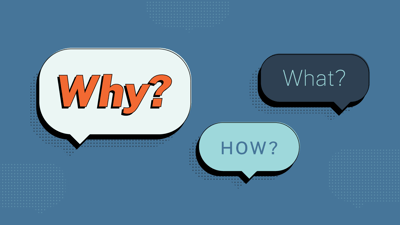Why Does Giving Make Us Happy?

Research shows that helping others makes us happy. But according to social psychologist and author Elizabeth Dunn, it matters how we do it. As a professional happiness researcher, Dunn investigates the meaning behind what she calls “the warm glow of giving” to discover the motivating factors behind why people make donations to charities.
Dunn found that the major difference between gifts that sparked an emotional response and those that fell flat came down to the real sense of connection with the impact of an individual gift. In other words, if the impact of a gift (no matter the size) was clearly communicated to the prospective donor, it made it easy to say yes.
In the 1970’s, when economists first studied how tax deductions affected charitable donations, they found a clear correlation between how much people gave and their income. Higher tax rates meant more valuable deductions, so people gave more. Combine a simple understanding of benefits with powerful storytelling and violà - an emotional return on investment in the form of a donation.
How do you prompt an emotional response to giving?
1. Clearly communicate impact.
On your homepage, on your donation page, across your email marketing! Make it easy to understand what a gift will translate to in terms of impact, and showcase how small gifts can make a big difference for those you serve.
Does $15 translate to a vaccination for an animal in need? Does $10 fill a hungry belly? Studies show that the majority of giving comes from small gifts rather than the collection of major donors, so treat your donors who give $5, $10, or $20 like major donors and foster those relationships to let your donors know they are valued and their gift makes a difference.
This is where personalization is key, and marketing automation is your friend! Not every nonprofit organization is going to have the human capital to fire-off a personalized thank you email when a new donor makes a gift or joins your newsletter. Leveraging marketing automation tools like a new donor welcome series make it easy to personalize your marketing at scale and make a donor feel appreciated.
2. Inspire "the warm glow of giving" through powerful storytelling.
Powerful storytelling makes all the difference when inspiring giving. As human beings, our episodic and semantic memory retains more information when shared in the form of a narrative, or a story.
Storytelling has been used for thousands of years as a way to pass down information, and these days we use storytelling as a form of marketing to clearly communicate the importance of a gift to inspire an emotional response. Every nonprofit has stories to tell, but the real challenge comes when it’s time to determine what stories you wish to tell and how to share them.
When crafting a story of impact to share with donors and prospective donors, remember these five rules: 1. know thy audience, 2. get to the heart of it, 3. make it timely, 4. show don’t tell, and 5. adapt. Consider messaging that has worked in the past, impactful stories that you may already have in your arsenal, and how you might bring these stories to life.
3. Understand the process of giving.
When you make a purchase online, the moment of satisfaction comes when that item arrives on your doorstep. You’ve spent money on something and gotten something in return. Comparatively, this moment of satisfaction happens before a donor makes a gift to a nonprofit organization. They did their research, learned about the work that you do, and made a conscious choice to invest in your mission.
The important part of this process is understanding how to prompt an emotional response, but also understanding what those emotional responses are. Donors may be compelled to give out of empathy, sympathy, fear, guilt, or even anger, but they are connected to your mission in one way or another.
In one of Elizabeth Dunn’s studies, researchers compared giving between two comparable nonprofit missions (Spread the Net and UNICEF) and set out to see what felt different to them as donors. The tangible, action-oriented mission of Spread the Net won the battle, with researchers seeing the tangible impact of a donation to provide malaria-preventing bed nets to families in Africa.
The moral of Dunn’s TED Talk and research around what makes us give to charity is steeped in the power of storytelling, and how those stories are communicated through your channels. Prompting an emotional response from prospective donors is the goal, where - hopefully - happiness will ensue.



